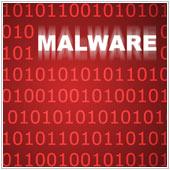 Computers must have appropriate protection from malware attacks. Aside from creating annoyances, malware infections can also affect the performance of your computer. Furthermore, the data on your system and confidential information that you use online may also be tracked and used without your knowledge. Because of the severity of the problems that it can cause you need to be very cautious about preventing malware infections, and know how to deal with them properly.
Computers must have appropriate protection from malware attacks. Aside from creating annoyances, malware infections can also affect the performance of your computer. Furthermore, the data on your system and confidential information that you use online may also be tracked and used without your knowledge. Because of the severity of the problems that it can cause you need to be very cautious about preventing malware infections, and know how to deal with them properly.
Signs of a malware infection
Before proceeding with the steps on how to respond to malware infections, we first need to learn about the signs and symptoms of a malware infection. These include:
- Several pop-ups appear even when not browsing the Web.
- Unusual slowness of the computer and Internet connection.
- System hangs or freezes.
- Corrupted programs.
- Antivirus is disabled.
- E-mails sent to or from your account which you did not send.
- High network activity, even when not using large programs or accessing huge data.
- Redirected access to some sites.
How to respond to a malware infection
In case you experience any of these symptoms, the first thing to do is to ensure that your antivirus and antispyware program is updated. This is to make sure that they detect the latest known threats on their database. You should then run scans to see if an infection is detected. If it is, the programs usually have a way to remove the infection. You then need to follow the steps the program recommends.
If this doesn’t work, disconnect the infected computer from the network to prevent the spread of the malware. Furthermore, avoid accessing the Web and using vital information such as bank account and credit card information. Let the technical department or your IT partner handle the concern since they are trained in determining and eradicating system malware infections.
Once the problem has been pinpointed, a tech specialist will go through the process of eliminating the infection. This includes backing up data on the computer and restoring the system to its original state. Depending on the extent of the infection, the computer may need to be wiped clean, or reformatted before restoring backed-up files.
After the whole process, the computer must be tested to ensure that the infection has been totally removed. Moreover, further investigation and studies must also be done to determine where the problem started, as well as to create a strategy as to how to prevent this from happening in the future.
How to prevent a malware attack
Prevention is better than a cure and this definitely applies to malware infections. It’s best to arm yourself with knowledge on how to avoid malware attacks and prevent your systems from being infected.
- Ensure that security protection is always updated and that you run system scans on a regular basis.
- Avoid downloading attachments or clicking links from unknown sites or senders.
- Enable firewall protection.
Malware can hugely affect business operations and the security of private information. One of the best ways to prevent this is to work with an IT partner, like us, who can help recommend and install protection systems. You might want to think about getting help in managing these solutions too, to ensure that your systems are secure at all times.
If you have questions or concerns with regards to malware prevention and resolution, feel free to call us. Our support team is always ready to help.